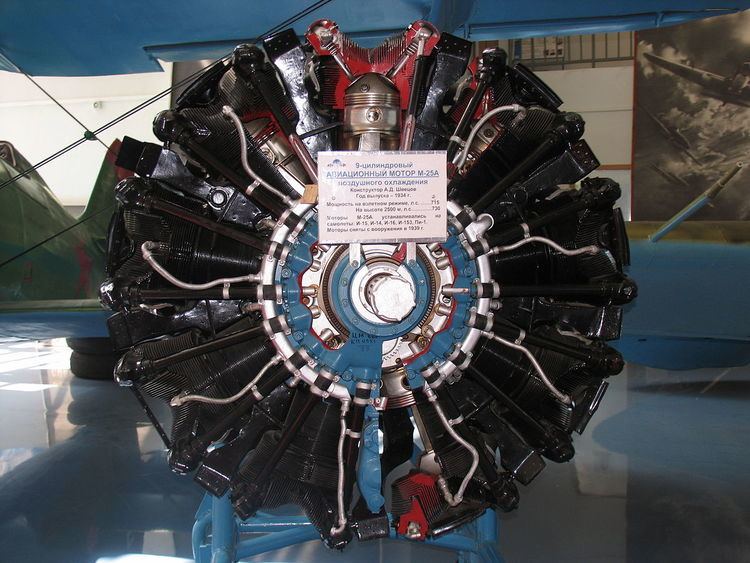 | ||
The Shvetsov M-25 was an aircraft radial engine produced in the Soviet Union (USSR) in the 1930s and 1940s, a licensed production variant of the Wright R-1820-F3.
Contents
Design and development
The first M-25s were produced from kits imported from the United States; the main difference between the later M-25 and the R-1820-F3 was the use of metric components. 13,888 M-25s were produced in the USSR at factories in Perm and Kazan. There were a number of sub-variants which differed from the original M-25 in that they had reduction gears, rather than direct drive. Performance was similar to the equivalent Wright engines. The M-25 was later developed into the ASh-62 and was later used as a pattern for the M-70. The M-70, a twin-row 18-cylinder engine, eventually developed into the ASh-73 which powered the Tupolev Tu-4, a reverse-engineered copy of the Boeing B-29.
